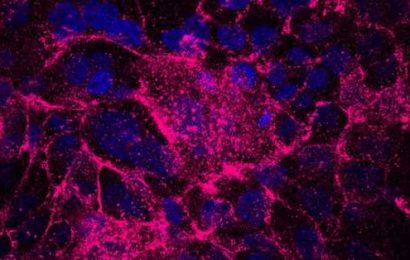(Reuters Health) – Most states created their vaccine distribution plans without getting advice from a health equity committee, and often without input from minority communities, a U.S. study suggests.
An analysis of publicly available COVID-19 vaccination plans for each of the 50 states and Washington, DC, revealed that 43 states created a committee to develop a vaccine distribution plan, but a health equity plan was referenced in just 20 of the plans. Even when health equity was considered, minority populations often were not represented, according to the research letter in JAMA Network Open.
“This is concerning because there is a disproportionate burden of severe COVID-19 disease and mortality among racial and ethnic minority groups,” the researchers, led by Dr. Amber Hardeman of the Tulane University School of Medicine in New Orleans, write in the report.
Of the 20 states with health equity committees, minority group representatives were present in just two-thirds of the committees, and in 16% of all the state vaccination plans, the authors note. “States without a health equity committee used partnerships to ensure diversity and equitable vaccine allocation. However, these partnerships also lacked racial/ethnic minority representation, with only 51% of states collaborating with organizations serving minority populations.”
The authors did not respond to a request for comment.
To take a closer look at whether states included the advice of an equity committee as they designed their vaccine distribution plans or even made a plan at all, the researchers analyzed data accessible on each state’s department of health website. They examined the state-specific vaccination distribution models in relation to the Centers for Disease Control and Prevention COVID-19 Vaccination Program Interim Playbook for Jurisdiction Operations, which was initially created on September 16, 2020.
Information collected from the state websites included the vaccination plan committee information, the number of distribution phases, the demographic characteristics and vaccine allotment quantity per phase, conditions listed as high-risk, the use of a health equity task force or diversity strategies, vaccine program monitoring techniques, implementation measures, metrics of distribution success, and communication strategies to maximize distribution.
Of the 51 plans the researchers evaluated, 43 (84%) created a committee to develop a vaccination plan. A health equity committee was referenced in 20 (39%) plans and not referenced in 31 (61%) plans. An implementation committee was referenced in 14 (27%) plans and not referenced in 37 (73%) plans.
Among the 20 health equity committees, 12 reported the types of members involved. Of these, 11 (92%) included physicians, six (50%) included government officials, four (33%) included ethicists, eight (67%) had minority group representation, and five (42%) had clergy. Of the 51 plans overall, minority group representatives were present in eight (16%) of the reported vaccination plans and 26 (51%) of the states collaborating with organizations that serve minority populations.
The total number of distribution phases ranged from three to seven with a median of four. The estimated vaccine allotments per phase and vulnerable patient populations were noted in 14 (27%) and 24 (47%) plans, respectively. Thirty-one (61%) of the plans included partnerships beyond the hospital or medical systems during phase 1, including partnerships with healthcare and community support services.
“Future studies should evaluate whether current protocols may lead to inequities in vaccine distribution during subsequent phases and how inequities will be addressed in future vaccination plan updates,” the authors conclude.
The new study is “really important,” said Nina Schwalbe, an adjunct assistant professor of population and family health, Columbia University Mailman School of Public Health in New York. “It’s exciting to have a review of all the states. I know from our own state that (minority) communities were not engaged and a real opportunity was lost. We know from public health research that the best way to increase access and ensure equity is to speak with the people who are really affected.”
It’s been clear since 2020, when the first studies were published, that those at highest risk of severe COVID-19 were the people who were most affected by poverty and structural racism, Schwalbe said. “Knowing that, these people, along with the elderly and healthcare workers, should have been given access first and foremost,” she added.
Schwalbe tried setting up a vaccination site near public housing in New York City but no vaccines were forthcoming from the state, she said. “We know we have to bring vaccines to these people,” she added. “You can’t expect them to come to the vaccines, in particular when they are already disenfranchised. They have trouble taking time off work and getting to a clinic.”
“Black and brown people have less access to healthcare,” Schwalbe said, adding that this is why many suffer from chronic diseases like diabetes and high blood pressure. “This could have been taken into account from day one.”
SOURCE: https://bit.ly/3wbZFNW JAMA Network Open, online July 2, 2021.
Source: Read Full Article


